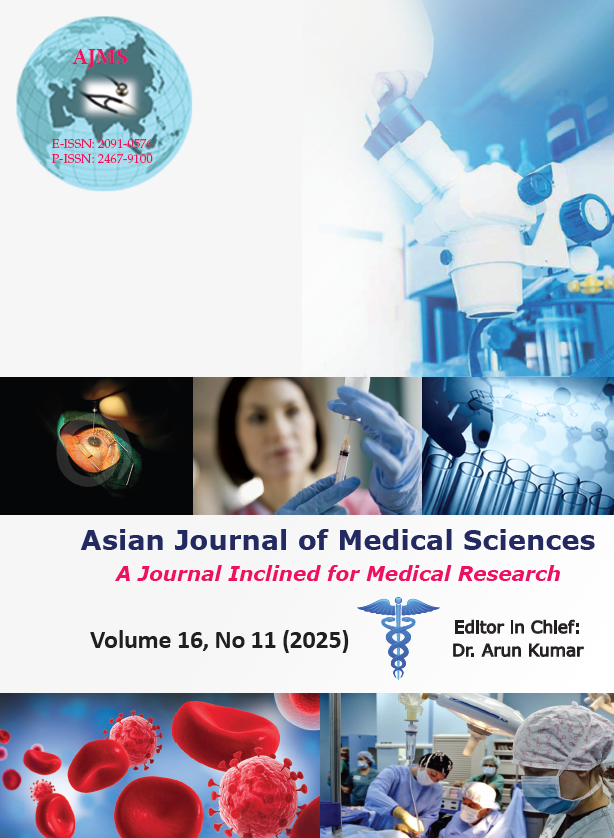Efficacy of quadratus lumborum block using injection bupivacaine as post-operative analgesia in patients undergoing nephrectomy: A randomized double-blind interventional study
DOI:
https://doi.org/10.71152/ajms.v16i11.4784Keywords:
Quadratus lumborum block; Bupivacaine; NephrectomyAbstract
Background: Nephrectomy is associated with significant post-operative pain, often managed with opioids that carry risks such as respiratory depression and nausea. Quadratus lumborum block (QLB), a regional anesthesia technique, has emerged as a promising alternative for pain relief by targeting both somatic and visceral nerves. However, limited evidence exists on its efficacy in nephrectomy patients, warranting further evaluation.
Aims and Objectives: Nephrectomy is associated with significant post-operative pain, traditionally managed with opioids that pose risks of adverse effects. This study aimed to evaluate the analgesic efficacy and opioid-sparing effects of ultrasound-guided single-shot type 1 QLB using 0.25% bupivacaine.
Materials and Methods: Sixty adult patients undergoing elective nephrectomy were randomized into two groups: Group A received 20 mL 0.25% bupivacaine and Group B received 20 mL 0.9% saline through type 1 QLB under ultrasound guidance. Standardized general anesthesia and post-operative intravenous patient-controlled analgesia with fentanyl were administered. Pain was assessed using the Numeric Rating Scale at multiple intervals up to 24 h. Observer’s Assessment of Alertness/Sedation (OAA/S) scores, opioid requirements, and adverse effects were recorded.
Results: Fifty-eight patients completed the study. Group A showed significantly lower median pain scores at rest, on movement, and during coughing from 1 to 24 h post-extubation (P<0.001 at most time points). Cumulative fentanyl consumption at 24 h was markedly reduced in Group A (155±89 μg vs. 355±53 μg; P<0.001). Higher OAA/S scores were recorded in Group A, with no sedation or motor weakness. No block-related adverse events were noted. Minor complications, such as nausea and ileus, occurred only in Group B.
Conclusion: A single-shot type 1 QLB using 0.25% bupivacaine significantly improves post-operative analgesia, reduces fentanyl consumption, and minimizes opioid-related side effects for 24 h following nephrectomy.
Downloads
Downloads
Published
How to Cite
Issue
Section
License
Copyright (c) 2025 Asian Journal of Medical Sciences

This work is licensed under a Creative Commons Attribution-NonCommercial-NoDerivatives 4.0 International License.
Authors who publish with this journal agree to the following terms:
- The journal holds copyright and publishes the work under a Creative Commons CC-BY-NC license that permits use, distribution and reprduction in any medium, provided the original work is properly cited and is not used for commercial purposes. The journal should be recognised as the original publisher of this work.
- Authors are able to enter into separate, additional contractual arrangements for the non-exclusive distribution of the journal's published version of the work (e.g., post it to an institutional repository or publish it in a book), with an acknowledgement of its initial publication in this journal.
- Authors are permitted and encouraged to post their work online (e.g., in institutional repositories or on their website) prior to and during the submission process, as it can lead to productive exchanges, as well as earlier and greater citation of published work (See The Effect of Open Access).





